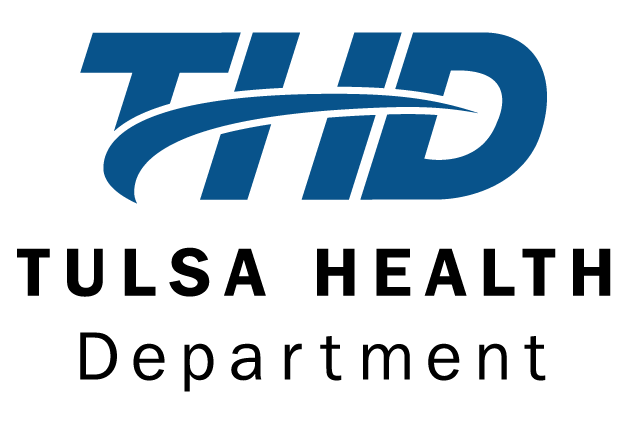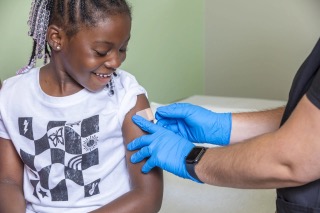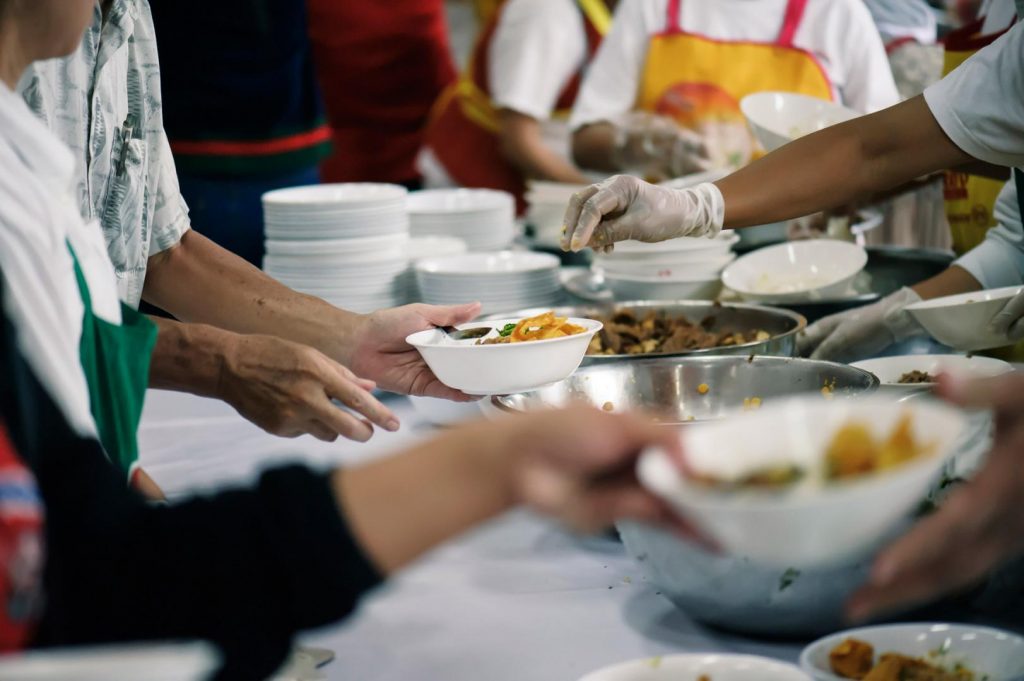Clinic services at our North Regional Health and Wellness Center will be unavailable December 22-24, 2025. The nearest location open for these services during that time is our 3rd & Utica Clinic at our Central Regional Health Center. All THD locations are closed Dec 25-26.
Food Safety Classes, Study Guides and Permits
Food safety training assures that the permit holder understands the importance of good hygienic practices and that they have knowledge on how to protect food against contamination. Local city ordinances require that food workers have a valid food permit from THD in their possession while at work.
FOOD HANDLER PERMIT
Our Food Protection Service Program’s goal is to improve the health and well-being of all Tulsa County residents and visitors by providing safe food handling education, and by working with the food industry to ensure that control measures are in place to reduce food-borne illness risk factors.
Food Protection Services Program
Each year, food protection services educates more than 30,000 restaurant employees and other food employees on food safety. All local food service employees must have an original, valid Food Handler Permit from THD in their possession while at work. To receive a permit, you must successfully complete a THD Food Safety Class.
Find our Food Handler Permit office located at our James O. Goodwin Health Center, 5051 S. 129th East Ave, Tulsa, OK. Office hours are Monday through Friday, 8:00 a.m. – 4:00 p.m. with the exception of state-recognized holidays. Payments for permits are accepted only during this time. THD is not able to accept payment for permits after 4:00 p.m.
Online Training
Food Protection Services hosts online food handler training classes on any digital device with internet access. From training to testing, the online food safety class is available in many languages and can be taken anytime. The online training and registration is easy to navigate and takes approximately an hour to complete. If you are a new user, click Start Your Online training to register below. Upon passing the test, you will receive a Food Handler Permit.
Get Your Food Handler Permit
Copy of Permit/Returning User
Once you have completed the course, return at anytime to access your Tulsa Food Handler permit on your phone or reprint another copy. Click “Returning Users” below, choose preferred language, then select “Returning User” at the bottom of the Welcome page to sign in.
Computer Stations
If you do not have access to a computer, tablet or phone with internet to complete the online training, the Tulsa Health Department has computer kiosks available for public use between 8am – 2pm Monday through Friday at the following locations:
- James O. Goodwin Health Center | 5051 South 129th East Ave., Tulsa OK, 74134
- North Regional Health Center | 5635 MLK Jr. Blvd., Tulsa, OK, 74126
Permit FAQs
- Food Handler Permits are $20 and expire after 3 years when the course and test must be taken to be renewed.
- Food Handler Permits must be available at all times while the employee is working.
- The Tulsa Health Department inspector will accept screenshots and paper copies of the food handler permit.
- If you completed the course online, you can log in to your account and reprint at any time for free.
- Taking an internet online training course from a third party does not qualify you to get a THD permit or replace the need to have a food handler permit.
VOLUNTEER CLASSES
Volunteers need food safety training too, if they are serving food.
Volunteer permits are for food handlers that aren’t receiving pay for work performed but still need a permit to work. Non-profit groups can call Food Protection Services at 918-595-4300 and request to speak with the Food Safety Training Coordinator OR take the FREE volunteer class online.
Online Training
The time that it takes to complete the volunteer training course online varies. Please allow approximately one hour to complete the course. Upon completion of the course, you will be able to print your volunteer permit. The volunteer permit must be available whenever working in volunteer capacity. There is no cost to complete THD’s online volunteer training. Please check out our study guides if needed.
In-person Training
We encourage volunteers to use the online training above when it’s available but will arrange to teach a free in-person volunteer class for non-profit organizations who request it. The organization must have 100+ people in attendance to schedule an in-person class that will last approximately one hour and cover basic food safety activities. The volunteer cards will then be presented to those that attended at the end of the class and the cards are valid for one calendar year. When the volunteer card expires, the volunteer worker must retake the class either online or another group training will need to be scheduled.
This training is intended for volunteers only and volunteer permits are not for food employee positions. For more information or to schedule a volunteer class, call 918-595-4300 and ask for the Food Safety Training Coordinator.
Volunteer Online Training
MANAGER'S CERTIFICATION
Become A Certified Food Service Manager
Many area food service establishments are required to have at least one certified food service manager in order to adequately train and supervise employees. To receive Manager’s Certification, you must first complete an American National Standards Institute (ANSI) accredited food protection manager certification program. For a complete list of ANSI accredited Manager’s Certification courses, click here.
After completing a training program, you must register your manager certificate with THD. Bring your certificate of class completion and a valid photo ID (like a driver’s license) to register. Find our office located at our James O. Goodwin Health Center, 5051 S. 129th East Ave, Tulsa, OK. Office hours are Monday through Friday, 8:00 a.m. – 4:00 p.m. with the exception of state-recognized holidays. Payments for permits are accepted only during this time. THD is not able to accept payment for certifications after 4:00 p.m.
Manager’s Certification Class Information
Certification classes are offered locally at:
- Oklahoma Restaurant Association, 405-942-8181
- Tulsa Community College, 918-595-7200
- Tulsa Technology Center, 918-828-5000
Please call these agencies for class schedules, costs and testing.
THD Registration of Manager’s Certification
- You must present verification of your training completion or Challenge Test Certificate, plus valid photo identification.
- Registration is available at the James O. Goodwin Health Center (5051 S. 129th E Ave.) at the Food Protection Service Program office.
- Nonrefundable certification fee is $25 cash or credit card; no checks accepted.
- Tulsa Food Protection Manager’s Certificates will expire five years from the date of issuance.
For more information about THD food safety training classes, permits and manager certification, please call 918-595-4300.
STUDY GUIDES
Study Guides in English, Spanish and Chinese
Food Handler Study Guide in English (rev. April 2012)
Food Handler Study Guide in Spanish (rev. April 2012)
FAQS
Why do food service workers sometimes handle food with bare hands instead of wearing gloves?
It is best to handle foods that require no further cooking with suitable utensils or gloves rather than bare hands. Oklahoma food code requirements state that food employees "shall not contact exposed, ready-to-eat food with their bare hands and shall use suitable utensils such as deli-tissue, spatulas, tongs, single-use gloves, or dispensing equipment.." However, food code regulations also allow food employees to contact exposed, ready-to-eat food with their bare hands if the food establishment maintains:
- A written employee health policy that details how the food establishment complies with employees health and activities related to diseases transmissible through food.
- Documentation that food employees acknowledge that they have received training in the risks of contacting ready-to-eat foods with bare hands, proper handwashing techniques, and good hygienic practices.
- Documentation that food employees contacting ready-to-eat food with bare hands use two or more of the following control measures to provide additional safeguards to hazards associated with bare hand contact:
- Double handwashing,
- Nail brushes,
- A hand antiseptic after handwashing as specified under OAC 310:257-3-14, or
- Other control measures approved by the Department
- Documentation that corrective action is taken when above requirements are not followed.
Do you publish results of restaurant inspections?
Restaurant inspection reports are open records. They may be viewed online or a copy can obtained at the James O. Goodwin Health Center at 5051 S 129th E Ave in Tulsa.
Can I prepare food items in my home and sell them to the public?
The Homemade Food Freedom Act went into effect on November 1, 2021. This law allows for limited sales of foods produced in a private residence. These types of businesses are regulated by the Oklahoma Department of Agriculture, Food, and Forestry. Please contact them with any concerns in regards to the Home-Made Food Freedom Act.
How long can leftover food be left out of the refrigerator?
Hot foods should be refrigerated as soon as possible within two hours after cooking. Food kept without temperature control allows the food to cool to the same temperature as the environment and allow harmful bacteria to grow. Don't keep food if it's been stored below 135F or above 41F for more than two hours. Each temperature scenario incurs different risks regarding the type of foodborne pathogens able to grow and the rate of growth likely to occur so don't taste test it, either. Even a small amount of contaminated food can cause illness.
Date leftovers so they can be used within a safe time. Generally, they remain safe when properly refrigerated for three to five days. If in doubt, throw it out.
How long can you store food in a refrigerator or freezer?
This chart is a rundown of storage guidelines for some of the foods that are regulars on America's dinner tables.
Does "freezer burn" make food unsafe?
Freezer burn is a food-quality issue, not a food safety issue. It appears as grayish-brown leathery spots on frozen food. It occurs when air reaches the food's surface and dries out the product. This can happen when food is not securely wrapped in air-tight packaging. Color changes result from chemical changes in the food's pigment. Although undesirable, freezer burn does not make the food unsafe. Cut away these areas either before or after cooking the food. When freezing food in plastic bags, push all the air out before sealing.
How long can shelf-stable foods be safely stored on the shelf?
According to the Food and Drug Administration (FDA), food can be safe forever from a foodborne-illness standpoint - but if shelf-stable food has been on the shelf for an extended period of time, you might not want to eat it because the quality may not be good. In this case, a "Best if Used By/Before" date indicates when a product will be of best flavor or quality. Food quality deals with taste, texture, and nutritional value of food, it is not a purchase or safety date. A "Sell-By" date tells the store how long to display the product for sale for inventory management..
For example, freezer burn, rancidity, and food spoilage are all quality-related issues. The FDA does not require an expiration date for shelf-stable foods, since the storage time for these foods is a quality issue, not a food safety concern.
Is food irradiation safe?
Many health experts agree that using a process called irradiation can be an effective way to help reduce food-borne hazards and ensure that harmful organisms are not in the foods we buy. During irradiation, foods are exposed briefly to a radiant energy source such as gamma rays or electron beams within a shielded facility. Irradiation is not a substitute for proper food manufacturing and handling procedures. But the process, especially when used to treat meat and poultry products, can kill harmful bacteria, greatly reducing potential hazards.
The Food and Drug Administration has approved irradiation of meat and poultry and allows its use for a variety of other foods, including fresh fruits and vegetables, and spices. The agency determined that the process is safe and effective in decreasing or eliminating harmful bacteria. Irradiation also reduces spoilage bacteria, insects and parasites, and in certain fruits and vegetables it inhibits sprouting and delays ripening. For example, irradiated strawberries stay unspoiled up to three weeks, versus three to five days for untreated berries.
Food irradiation is allowed in nearly 40 countries and is endorsed by the World Health Organization, the American Medical Association and many other organizations.
Irradiation does not make foods radioactive, just as an airport luggage scanner does not make luggage radioactive. Nor does it cause harmful chemical changes. The process may cause a small loss of nutrients but no more so than with other processing methods such as cooking, canning, or heat pasteurization. Federal rules require irradiated foods to be labeled as such to distinguish them from non-irradiated foods.
For example, freezer burn, rancidity, and food spoilage are all quality-related issues. The FDA does not require an expiration date for shelf-stable foods, since the storage time for these foods is a quality issue, not a food safety concern.
Is irradiated food safe to eat?
Food cannot be irradiated unless the Food and Drug Adminstration (FDA) approves it. The FDA has evaluated irradiation safety for 40 years and found the process safe and effective for many foods. Health experts also say that in addition to reducing E.coli O157:H7 contamination, irradiation can help control the potentially harmful bacteria Salmonella and Campylobacter, two chief causes of foodborne illness.
Irradiation does not make food radioactive, compromise nutrional quality, or noticeably change the taste, texture, or appearance of food, as long as it's applied properly to a suitable product. It's important to note that irradiation cannot be used with all foods. For example, it causes undesirable flavor changes in dairy products and it causes tissue softening in some fruits, such as peaches and nectarines.
The Food and Drug Administration has approved irradiation of meat and poultry and allows its use for a variety of other foods, including fresh fruits and vegetables, and spices. The agency determined that the process is safe and effective in decreasing or eliminating harmful bacteria. Irradiation also reduces spoilage bacteria, insects and parasites, and in certain fruits and vegetables it inhibits sprouting and delays ripening. For example, irradiated strawberries stay unspoiled up to three weeks, versus three to five days for untreated berries.
Food irradiation is allowed in nearly 40 countries and is endorsed by the World Health Organization, the American Medical Association and many other organizations.
Irradiation does not make foods radioactive, just as an airport luggage scanner does not make luggage radioactive. Nor does it cause harmful chemical changes. The process may cause a small loss of nutrients but no more so than with other processing methods such as cooking, canning, or heat pasteurization. Federal rules require irradiated foods to be labeled as such to distinguish them from non-irradiated foods.
For example, freezer burn, rancidity, and food spoilage are all quality-related issues. The FDA does not require an expiration date for shelf-stable foods, since the storage time for these foods is a quality issue, not a food safety concern.
Why is it important to use a cooking thermometer?
One of the critical factors in fighting food-borne illness is temperature. Bacteria grow slowly at low temperatures and multiply rapidly at mid-range temperatures. To be safe, a product must be cooked to an internal temperature high enough to destroy harmful bacteria. Using a thermometer is a reliable way to ensure that food has reached the proper temperature. However, to be effective, the thermometers must be used properly and calibrated correctly. If the thermometer is inserted incorrectly, or placed in the wrong area, the reading may not accurately reflect the internal temperature of the product. In general, the thermometer should be place in the thickest part of the food, away from bone, fat or gristle. Read the manufacturer's instructions on how to calibrate (check the accuracy of) the thermometer. According to the U.S. Department of Agriculture, temperature is the only way to guage whether food is sufficiently cooked. USDA research reveals that the 'color test' can give consumers misleading information about the safety of the foods they are preparing, since cooked color varies considerably. For example, freezing and thawing may influence a meat's tendency to brown prematurely.
What should you do if you have a problem with the food product?
Example Problems:
- Your hot dog has a strip of plastic inside.
- The canned chili contains a metal washer.
- You think a restaurant dinner made you ill.
- A piece of glass was in your box of cereal.
What can you do?
For help with meat, poultry and egg products: Call the toll-free USDA Meat and Poultry Hotline at 1 (800) 535-4555.
For help with restaurant food problems:
Call the Health Department in your city, county or state. In Tulsa county, call (918) 595-4300.
For help with non-meat food products: For complaints about food products which do not contain meat or poultry - such as cereal - call or write to the Food and Drug Administration (FDA). Check your local phone book under U.S. Government, Health and Human Services, to find an FDA office in your area. The FDA's Center for Food Safety and Applied Nutrition can be reached at 1 (888) 723-3366.
In order for the USDA or FDA to investigate a problem, you should have:
- the original container or packaging;
- the foreign object (the plastic strip or metal washer, for example);
- and any uneaten portion of the food (refrigerate or freeze it).
Information you should be ready to tell the Hotline on the phone includes:
- your name, address and phone number;
- the brand name, product name and manufacturer of the product;
- the size and package type;
- can or package codes (not UPC bar codes) and dates;
- establishment number (EST) usually found in the circle or shield near the "USDA passed and inspected" phrase; (if meat, poultry, or egg product)
- name and location of store and date you purchased the product.
You can complain to the store or the product's manufacturer if you don't choose to make a formal complaint to the USDA or FDA.
If you think you are ill, see a physician
If an injury or illness allegedly resulted from use of a meat or poultry product, you will also need to tell the Hotline staff about the type, symptoms, time of occurrence and name of attending health professional (if applicable).
If an injury or illness allegedly resulted from restaurant food, call your State or local Health Department.
If an injury or illness allegedly resulted from non-meat food products, call or write to the FDA.
Bottom line: If you sense there's a problem with any food product, don't consume it. "When in doubt, throw it out."
Are establishments allowed to serve an undercooked meat product, such as eggs and hamburgers?
Yes, but food establishments are required to inform consumers of the significantly increased risk of consuming undercooked animal products by way of disclosure and reminder. The disclosure indicates which food items may be served in an undercooked or raw formand the reminder explains that states:
- "Regarding the safety of these items, written information is available upon request;"
- "Consuming raw or undercooked meats, poultry, seafood, shellfish, or eggs may increase your risk of foodborne illness;" or
- "Consuming raw or undercooked meats, poultry, seafood, shellfish, or eggs may increase your risk of foodborne illness, especially if you have certain medical conditions.
Who needs to have a Food Handler's Permit?
Food employees that serve food, prepare food or handle food utensils. Food establishments serving only pre-packaged foods and hostesses that only seat guests and provide menus aren’t required to have food safety training.
If I use a hand sanitizer, do I need to wash my hands?
YES! Hand sanitizers do not replace proper handwashing. Although hand sanitizers can effectively kill some germs on your hands, they do little to reduce the surface tension between your skin and dirt/grease/germs. The sanitizer only has an effect on the outer layer of film on your hands. Some bad germs are still present. When washing hands, first wet your hands with warm water, lather with soap for at least 20 seconds, rinse with warm water, then dry with a clean towel.
Why don't employees wash their hands after handling money?
Money, being dry, carries fewer bacteria than moist substances and areas. However, employees must wash their hands when changing duties, especially after doing anything non-food related—including touching money—before going back to handling food.
What documentation is needed to sign up for a food handler class?
No documentation is required to enroll in a food handler class. However, if you have a driver's license, Social Security card or other form of identification, the THD Food Handler Office may refer to it to assure proper spelling of your name.
What are the signs and symptoms of food poisoning?
The symptoms of food poisoning can vary greatly depending on the organism(s) causing the illness. There are actually two types of food poisoning: intoxication and infection.
With intoxication, the first or most predominate symptoms are upper gastrointestinal tract symptoms (nausea, vomiting) which occur shortly after ingestion of the contaminated food (2-24 hours).
With infection, the first or most predominate symptoms are lower gastrointestinal tract symptoms (abdominal cramps, diarrhea) which occur longer (6-36 hours up to several days) after ingestion. Other symptoms associated with food poisoning can include fever, chills, malaise, headache, and bloody diarrhea. Some organisms may cause neurological or allergic symptoms such as dizziness, blurred vision, puffiness, tingling, itching skin, burning throat and muscle aches.
In order to confirm food poisoning a doctor must run tests on blood, stool, and/or vomit to detect the presence of the organism. However, with many of the intoxication type of illnesses, the organism is not detectable. Food samples may also be checked to find the organism.
LOCATIONS
We have 9 locations across Tulsa County that offer a variety of services to help you and your family stay healthy.








